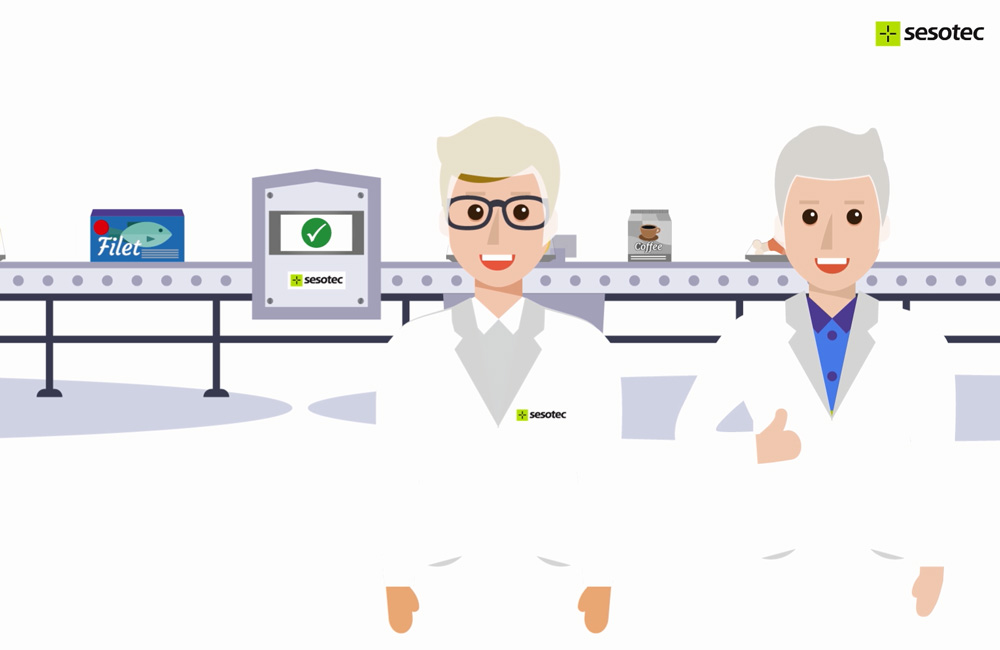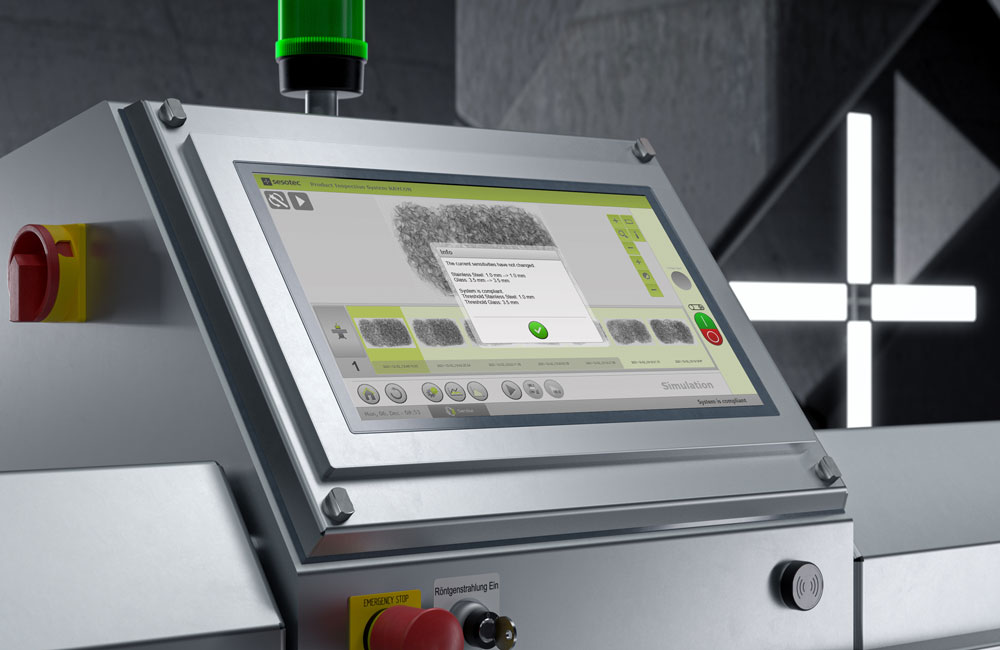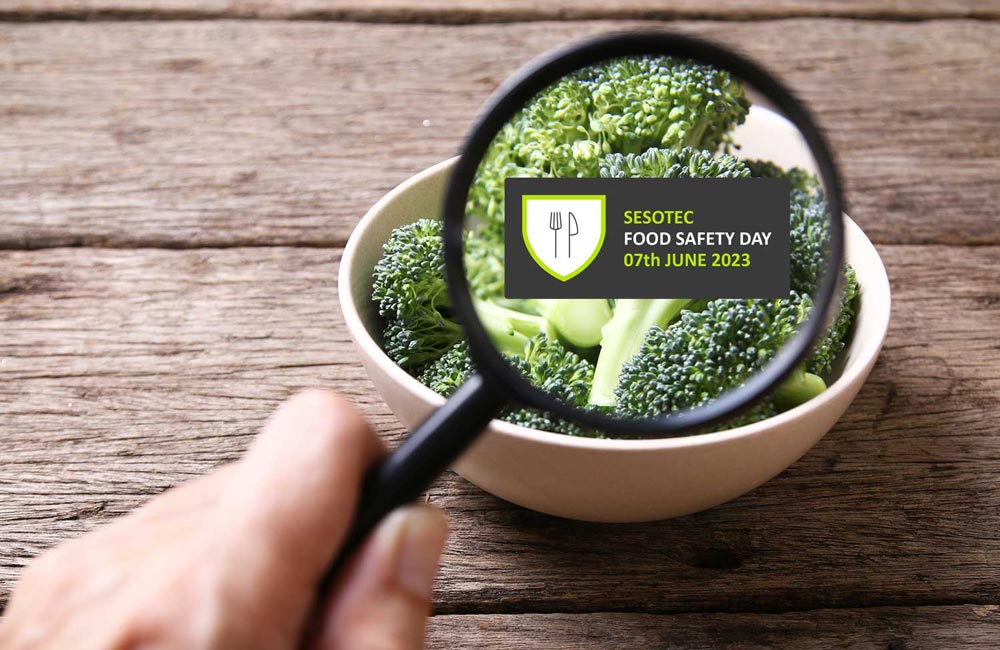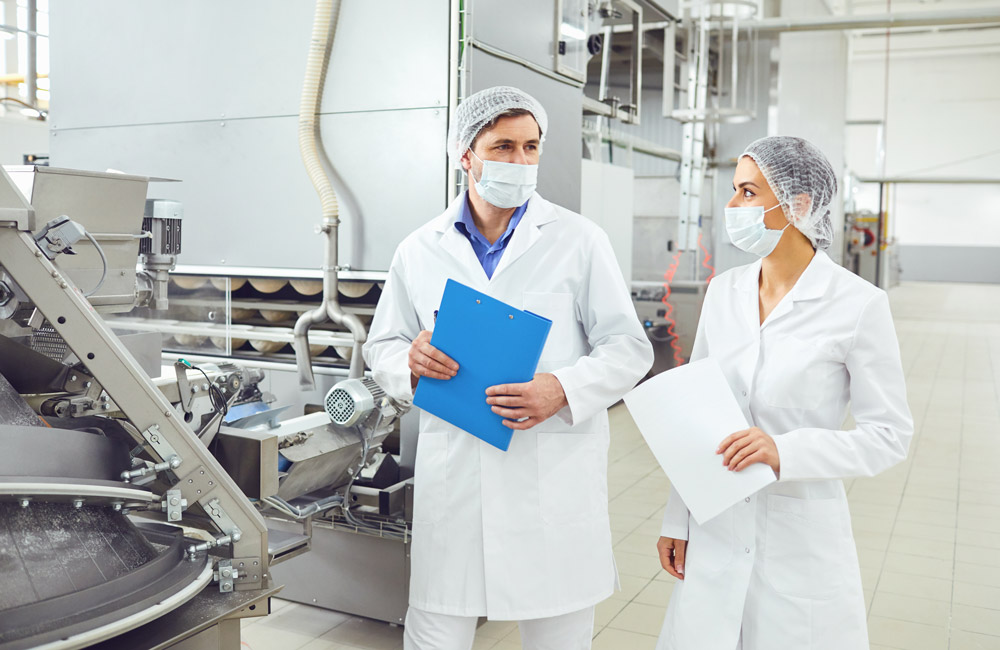Food Safety
Feb 16, 2021 |
How artificial intelligence can boost profit and sustainability in food processing
Between the growing world population and rising standards of living, society and industry are facing ever-mounting challenges to combine profit with sustainability. Securing the food supply for a future in which the world population reaches 10 billion is one example of such a challenge. To meet these demands, food manufacturers and processors must increase productivity on the one hand, and reduce waste on the other.
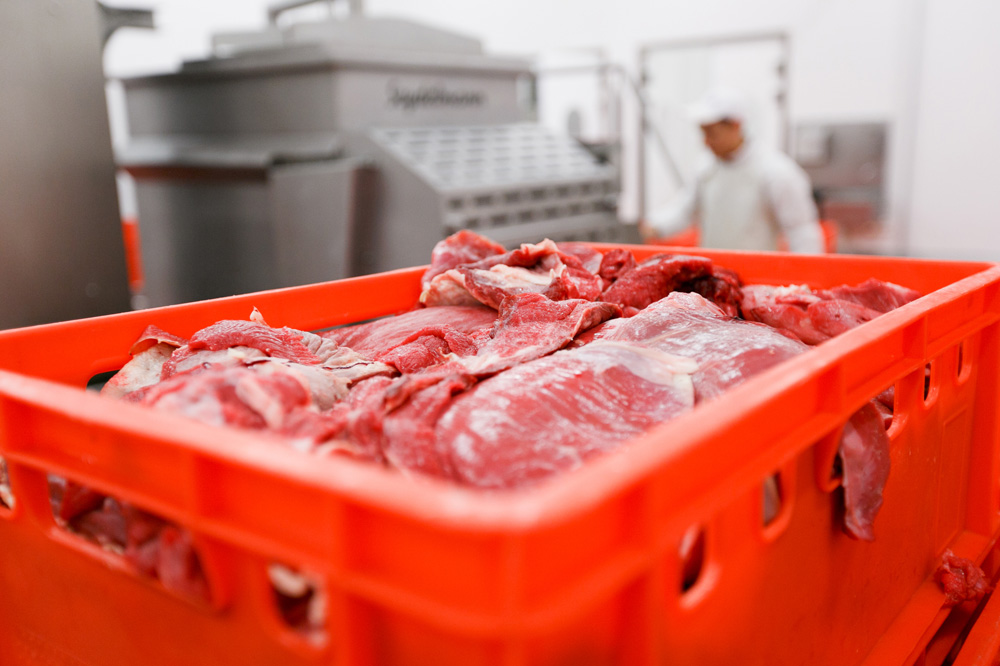
All the while, food production processes are under pressure from both consumers and retailers to ensure safety, efficiency, and regulatory compliance. In addition to striving to ensure their own profitability, food manufacturers and processors must fulfill legal requirements, the standards of retail chains, and the expectations of consumers. Functional process technology, such as foreign object detection equipment, is crucial to these aims.
Despite the breadth of technology available for foreign object detection, certain types of foods display a strong product effect*, making them difficult to inspect via conventional methods. When inspecting such difficult products, inductive systems with too-high sensitivity settings can frequently incur false rejects. This, in turn, leads to a high volume of product loss. X-ray-based product inspection systems are a possible alternative, but come with the disadvantage of being more expensive than metal detectors. New technologies that combine high sensitivity and affordability provide a promising solution to theses challenges.
*Product effect (= self-conductivity): When using inductive metal detectors in the food industry,
it should be noted that many foods, such as meat, cheese, and prepared meals,
exhibit a so-called product effect.
Product effect is created by a number of conditions, including temperature, ingredient composition,
and packaging material, as well as water, salt, and fat content. When combined, these characteristics
lead the product to exhibit a certain degree of electrical conductivity.
Product effect impairs metal detection by imitating the signals emitted by metal particles.
This can lead an inspection system to detect metal in a product even when none is present.
Conversely, metals in products may also go undetected due to product effect.
“THiNK”, the latest innovation from the Sesotec headquarters, is an metal detection system equipped with artificial intelligence. Sesotec’s THiNK metal detectors for the food industry apply artificial intelligence in order to virtually eliminate the interference caused by product effect, even in the most difficult food products.
How did Sesotec come to develop THiNK technology?
Sesotec considered the problems facing food manufacturers and processors in the area of situation analysis, and sought solutions to the following challenges:
- How can we reduce the number of false rejects caused by product effect?
- How can we increase the sensitivity of metal detectors despite product effect?
Finding no adequate solution among conventional technologies, our focus shifted to the possibilities in artificial intelligence. Through cooperation with a university research lab, we studied how this burgeoning technology might be applied to metal detection. Three distinct advantages of AI in metal detection emerged:
- A digitalized understanding of product effect
- Continuous improvements via machine learning
- Increased sensitivity and stability through the constant generation of new data, making for a future-proof investment
How THiNK technology works
We’ll start with an explanation of multi-simultaneous technology in conventional inductive metal detectors: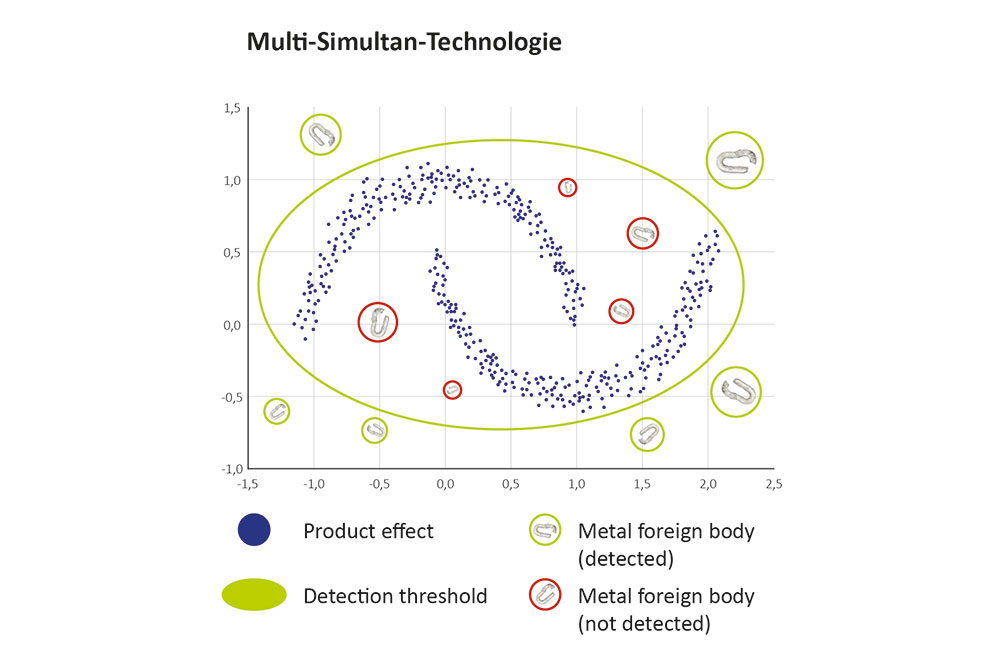
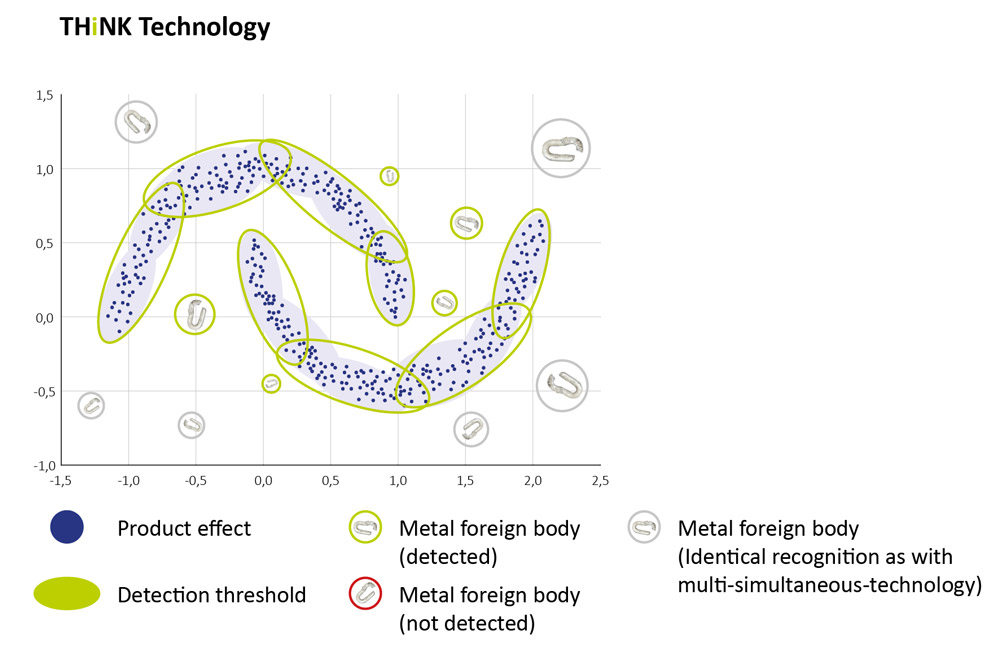
THiNK metal detectors also use multiple, simultaneous frequencies to inspect the product. Using AI technology, THiNK isolates the signals from product effect, creating additional detection thresholds with considerably higher sensitivity. All signals that lie outside of these thresholds are reliably identified as metallic contaminants. False rejects are reduced by means of more “intelligent” threshold calculation.
How THiNK metal detection benefits customers
There are four main ways in which customers benefit from metal detection with THiNK:
- Precise metal detection
- Food safety standards (compliant with legal regulations and private sector standards)
- Economical
- Reliable servicing
Products with high or fluctuating levels of product effect (due, for example, to metallized packaging or storage in brine or water) can be more reliably inspected. False rejects, and the food waste they cause, are reduced. Food safety regulations and standards (e.g. IFS, BRCGS, M&S, etc.) can be reliably upheld. Compared with an x-ray inspection machine, a metal detector with THiNK is the more cost-effective option.
Our experts are well-versed in the challenges of the food industry and can offer valuable guidance on complex topics such as validation and food safety certification. They are also available to assist customers via remote support and training.
THiNK case study: Finding metallic contaminants in coffee packaged in metallized film
Metal detectors with AI display a significant improvement in sensitivity compared to single frequency and conventional multi-frequency metal detectors. This improvement is observable with all kinds of metal: ferrous, non-ferrous, and stainless steel. Via machine learning, the detection threshold improves over time, thus increasing detection accuracy and stability in the long-term. False rejects are reduced.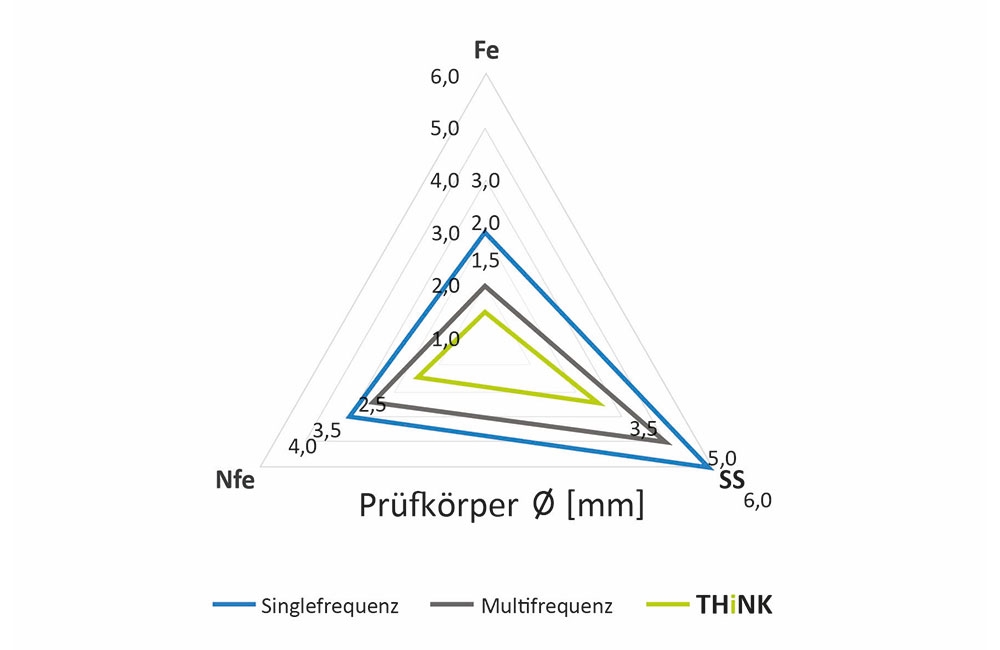
Application examples Metal detection on packaged products: THiNK compared to standard single frequency
Many foods have a high salt and/or fat content. The product effect is correspondingly high. If the smallest metal particles are to be found in such products, the sensitivity of standard metal detectors is often not sufficient. THiNK technology is the method of choice here.
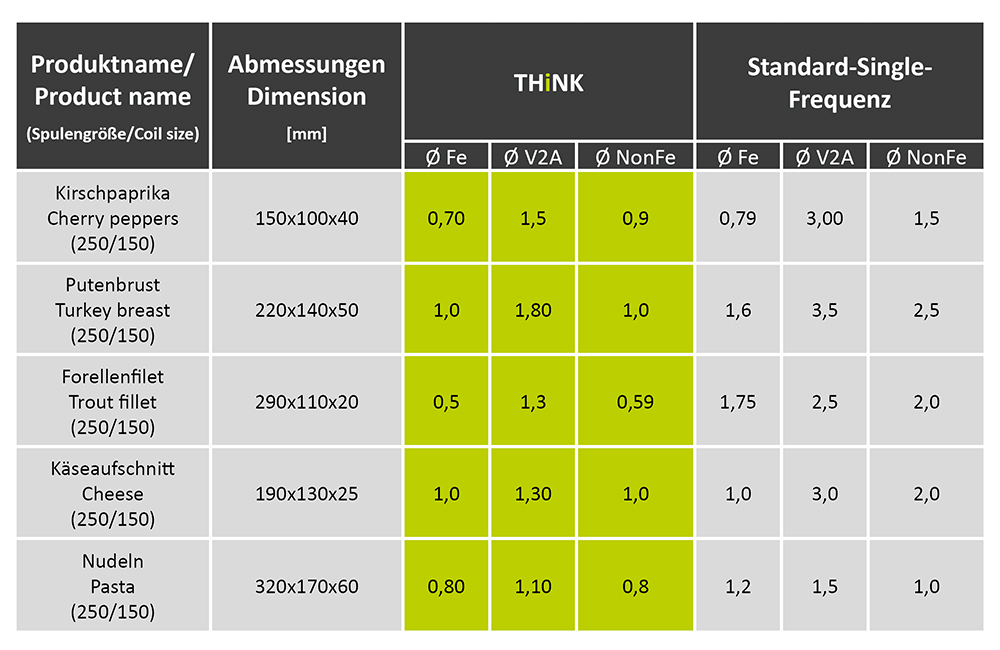
Metal detectors with THiNK have better detection accuracy than standard metal detectors. This results in fewer false detections, complaints and product recalls when inspecting packaged foods. THiNK technology pays for itself in a very short time.
Especially to mention: In the V2A metal detection of packaged noodles, THiNK technology delivers even better results than X-ray technology!
THiNK about it…
AI algorithms increase the reliability and precision with which contaminants are detected in the food manufacturing process. AI-enabled metal detectors can even efficiently inspect products packaged in metallized films. Food waste is reduced, food safety standards are upheld, and resources are saved. At the same time, productivity and profitability climb. THiNK technology from Sesotec is available as a licensed model since November 2020.
Here you can get more information about THiNK as well as the opportunity to get in contact with us.
www.sesotec.com/en/think
